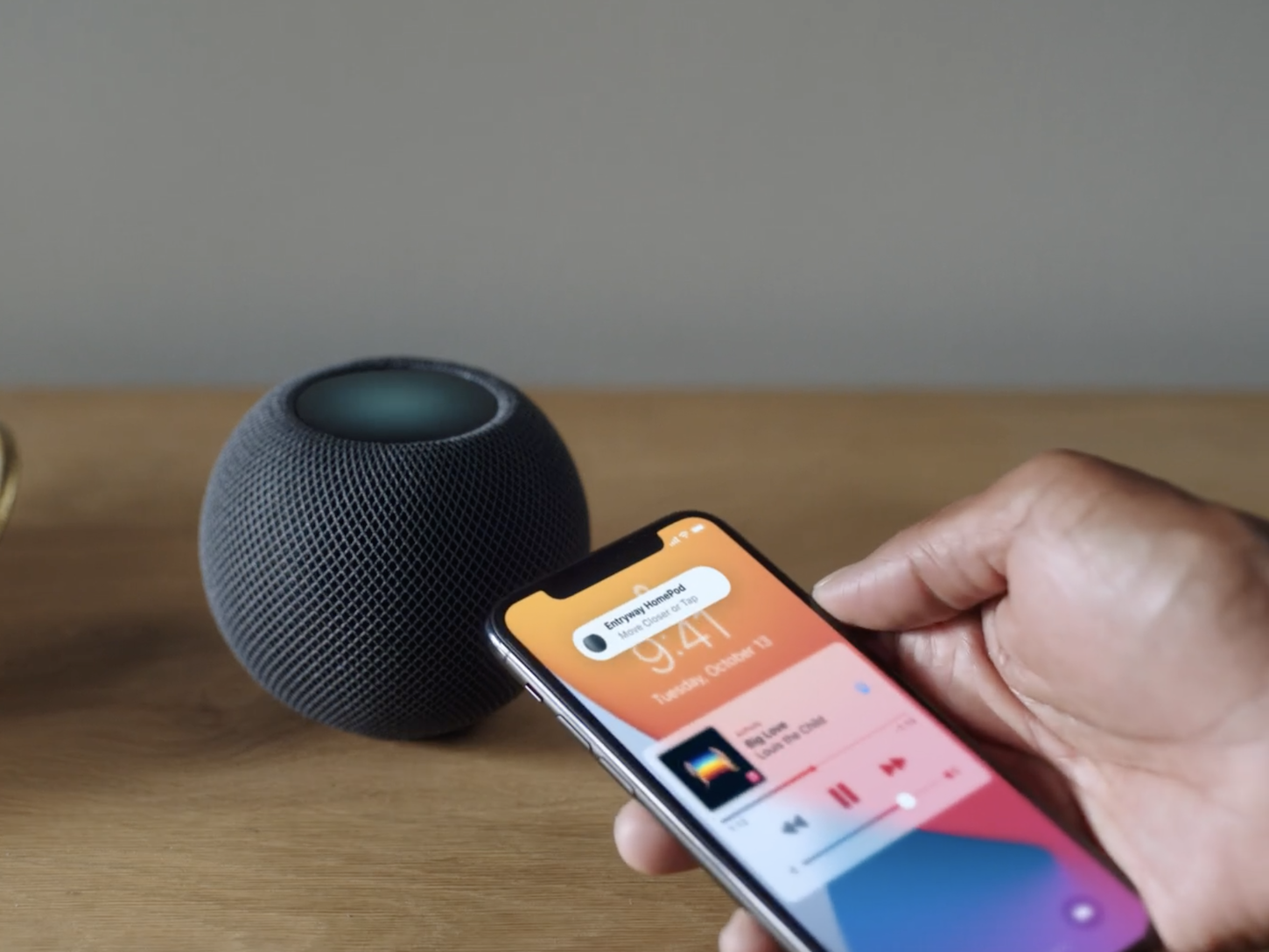
- Apple quietly unveiled its U1 chip last year, and now it’s starting to appear in major products like the iPhone 12, HomePod Mini, and Apple Watch Series 6.
- Apple hasn’t said much about what features the U1 chip will enable aside from a few passing references, but its inclusion in major products suggest it could have big plans for the tech in the future.
- For example, Apple showed how the HomePod Mini can understand when your phone is nearby and trigger content to be displayed on your iPhone.
- Other major smartphone makers like Samsung are beginning to incorporate the tech into their products as well.
- Visit Business Insider’s homepage for more stories.
During last year’s iPhone launch, Apple quietly unveiled a brand-new chip with little fanfare: the U1. The chip, which first appeared in the iPhone 11, enables devices to more easily detect and connect to other nearby gadgets using ultra-wideband technology.
It didn’t get much attention during last September’s iPhone keynote, and Apple didn’t say much about how the chip will power new iPhone features at the time.
But now, more than a year later, we’re getting a deeper understanding of Apple’s plans for the technology. The U1 chip has become part of Apple’s most high-profile products, from the new iPhone 12 lineup to the Apple Watch Series 6 and HomePod Mini.
The inclusion is telling of Apple’s vision for the future of mobile devices and the smart home, particularly that the U1 chip is going to play a big role in how these gadgets seamlessly connect and interact with one another. That’s especially important for Apple, which stakes its reputation on the convenience of its ecosystem and how easily its products work together.
Take the new HomePod Mini as an example. During Tuesday’s keynote, Apple showcased how the new HomePod Mini could understand when your iPhone was nearby “with high precision,” triggering special effects. When walking past the HomePod Mini situated in your home’s entryway, for instance, your phone could automatically display which song is playing when it senses that it’s close to the speaker.
The U1 chip can also be found in the Apple Watch Series 6 that the company announced last month. Once again, Apple didn't discuss how the chip could be used in the Apple Watch. But it's easy to imagine how a wearable device like the Apple Watch could benefit from the ability to sense nearby devices.
Apple, for example, is working to integrate the iPhone's U1 chip into its new digital car key feature, which makes it possible to unlock and start your car with your phone. The company says a new version of the feature that uses the U1 chip is coming next year, meaning you won't even have to remove your phone from your pocket or purse to unlock your car. It would be interesting to see what types of scenarios the U1 chip could similarly enable for the Apple Watch down the line.
Ultra-wideband technology (UWB) isn't necessarily new, and it's not exclusive to Apple. UWB is a wireless communications protocol similar to Bluetooth and Wi-Fi, but it's much more precise when it comes to locating nearby objects.
Samsung's recently launched Galaxy S20 Ultra smartphone also includes support for UWB. Samsung positioned the tech as being useful for Nearby Share, the Android equivalent of Apple's AirDrop, and its SmartThings Find service for locating lost items using your phone.
In addition to using the technology to locate lost items and automatically unlock your car, some industry experts see it as being useful for more easily managing smart home devices. Because UWB enables quick, precise connections with nearby devices without having to launch an app or menu, the technology could eventually turn your phone into a sophisticated remote control for the entire home.
A possible scenario could involve pointing your phone at your TV to change the channel or switch apps, and then aiming it at your smart lights to dim them without having to dig into apps or on-screen menus.
"Depending on what you're pointing at and what room you're in and what you're physically nearby, it would kind of contextually know what you're intending to use it with," Phil Solis, a research director on the International Data Corporation's enabling technologies team, previously said to Business Insider in reference to UWB.
Bill Ray, a senior director and analyst for market research firm Gartner, pointed out that such functionality could be useful for AirPods as well. Imagine being able to pan your iPhone around the room and have it alert you when you're facing the right direction of your lost AirPod. But integrating the chip into AirPods will be difficult given their small size, he said.
"It will come eventually, but it's not going to come quickly," Ray said in an interview with Business Insider in August.
The U1 chip may play a small role in the iPhone's functionality for now. But the fact that it's become a part of critical new devices like the Apple Watch Series 6 and iPhone 12 suggests Apple could have big plans for it down the line.

